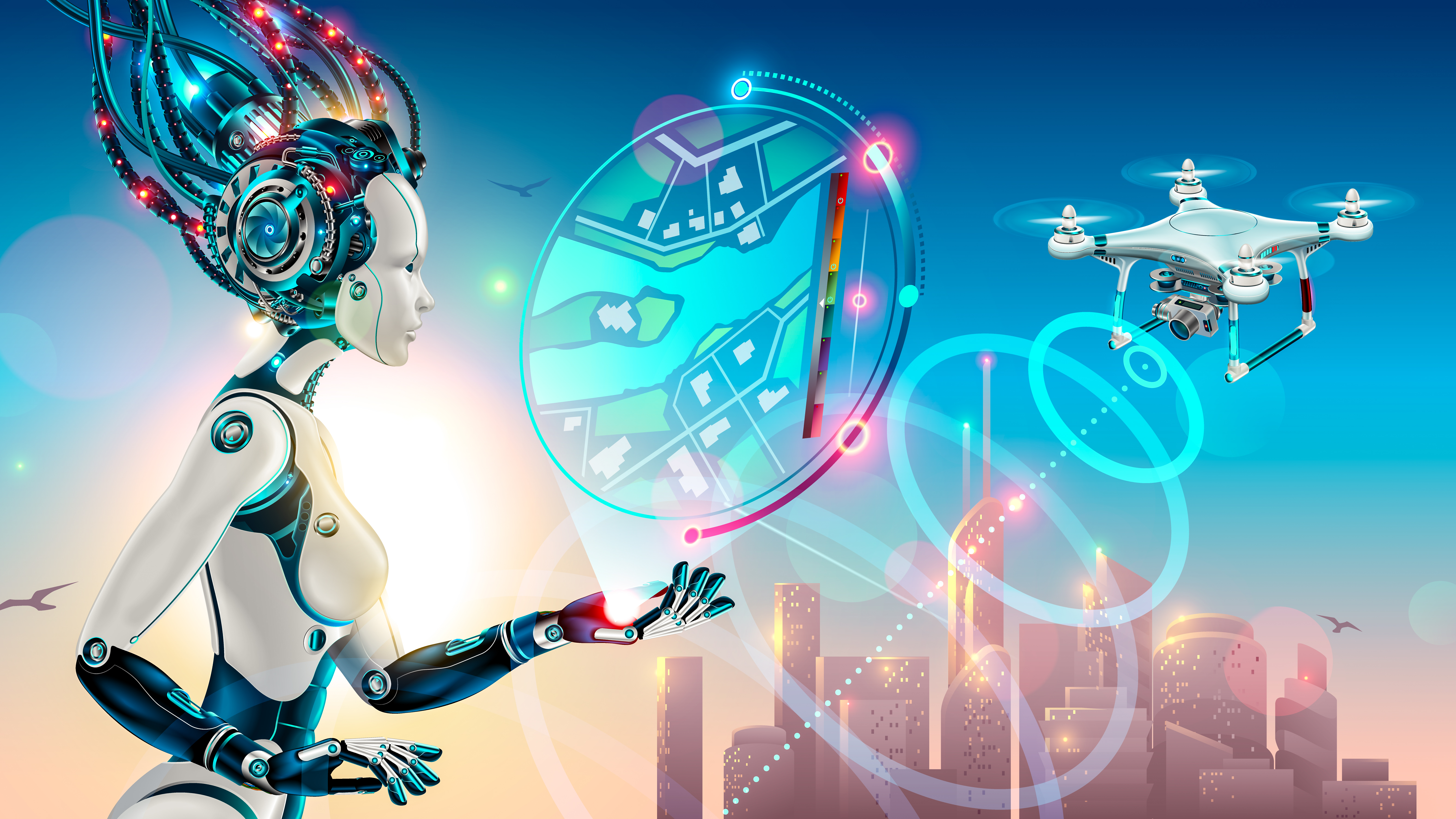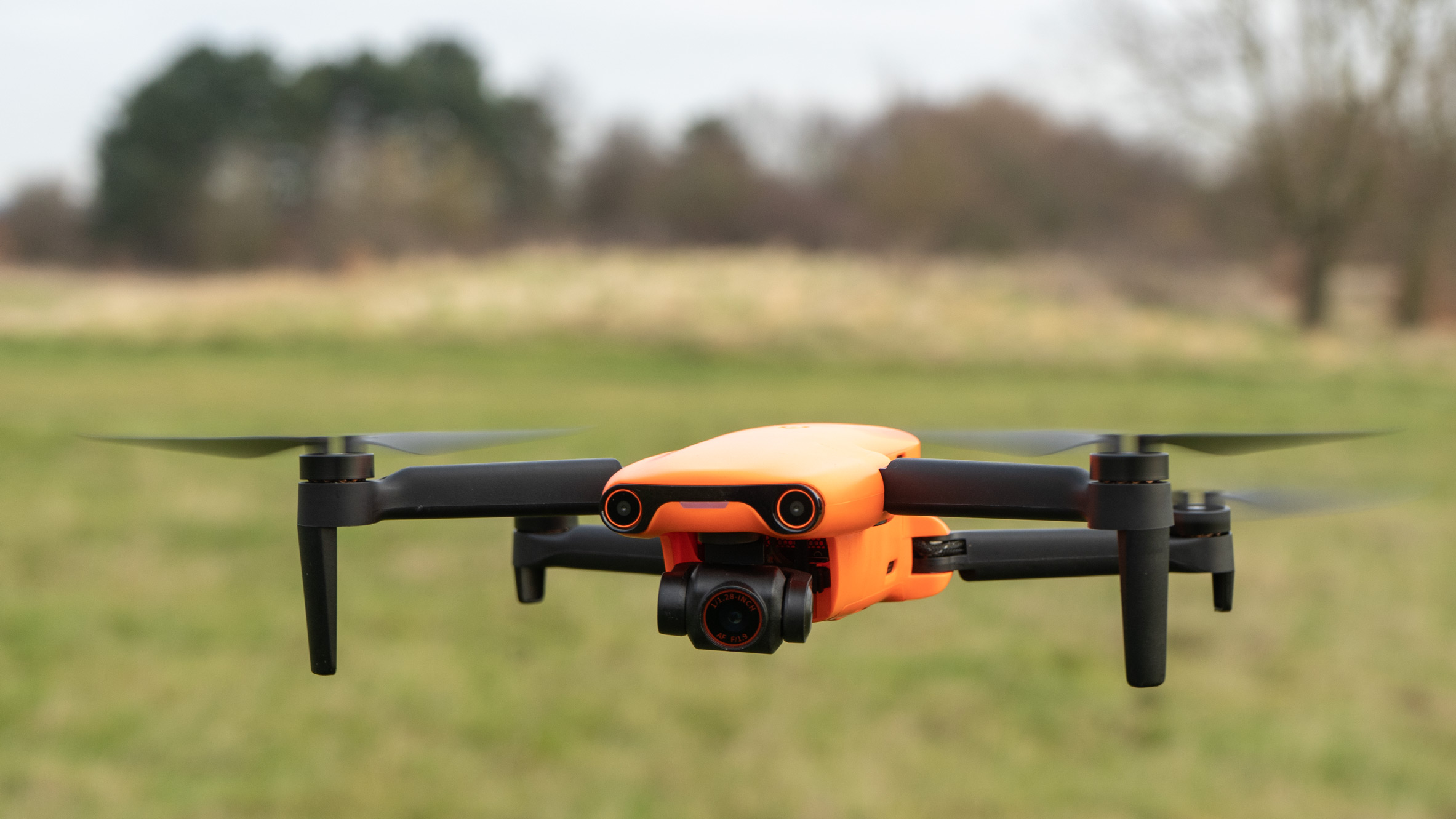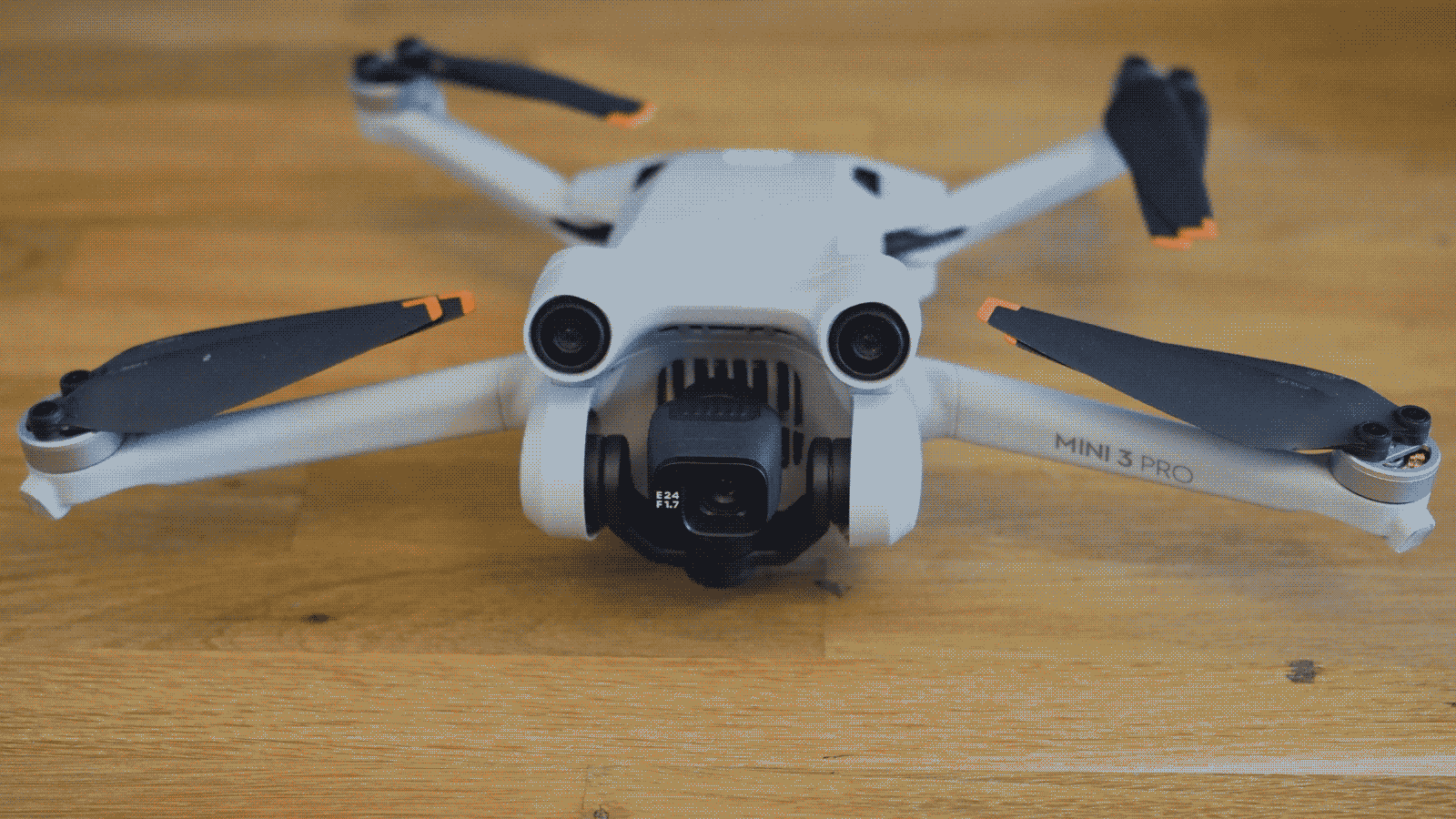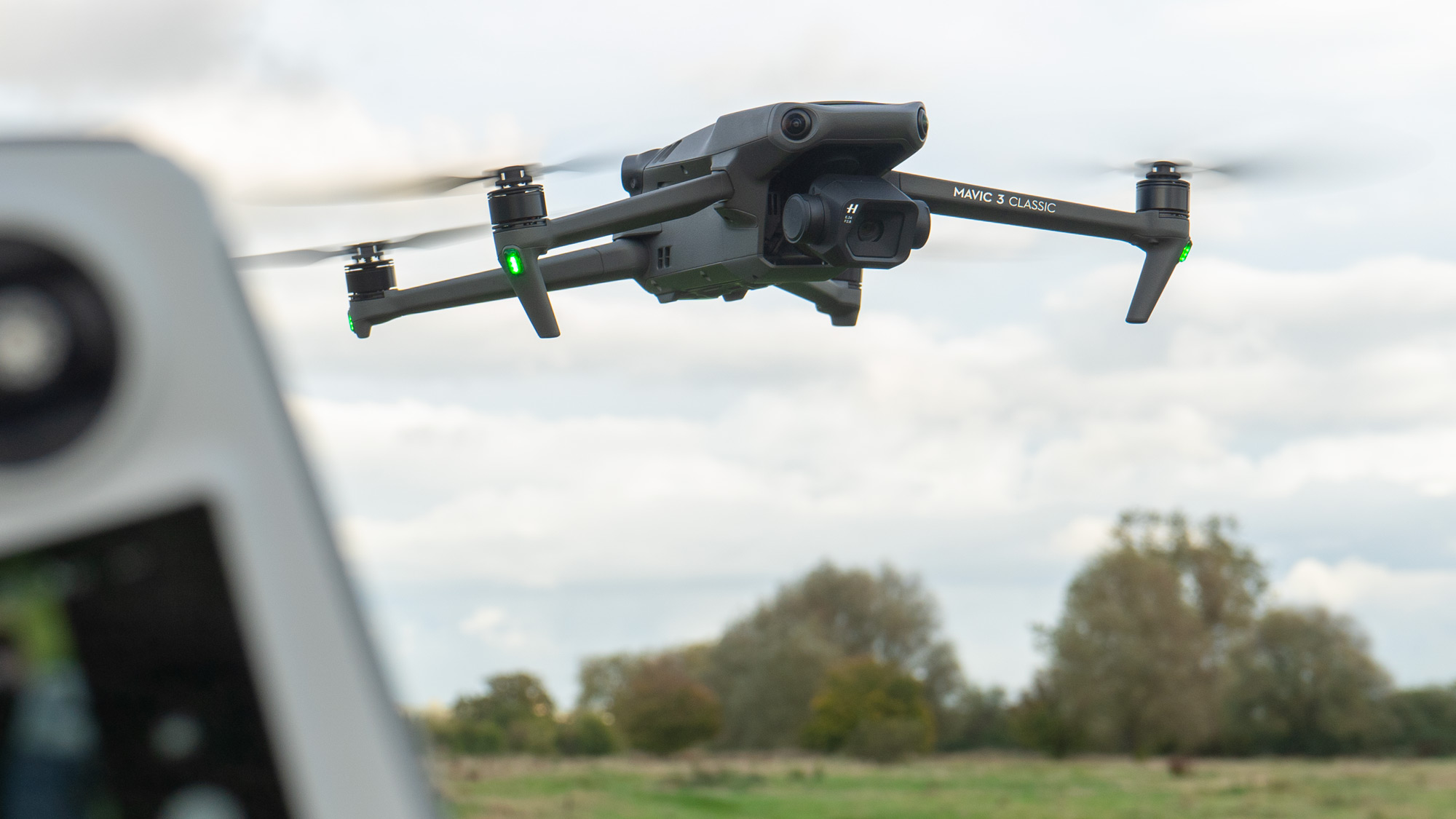Drones in 2022: what took off this year, and what will fly in 2023?
It’s been a big (but very light) year in the world of drones with some major trends establishing themselves

2022 has seen a lot of significant releases in the drone market which have moved the options on significantly. Laws have changed, drones have got new tricks. Market-leader DJI has even moved home!
1: Pro drones go Ultralight?

Physics might prevent truly professional level optical components existing on a sub-250g drone (the crucial threshold for regulations around the world), but this year saw the arrival of the Autel EVO Nano with 0.8-inch sensor, and DJI’s Mini 3 Pro (0.77-inch sensor) both significantly upped the game for drones in this weight class, but the cameras were only part of the equation (see our Nano+ vs Mini 3 Pro comparison). Both also features vision sensors for collision avoidance and subject tracking, meaning it’s fair to say that if any one product category stole 2022 it was the ultralights. These drones can now seriously be seen as contenders – and with less paperwork to boot. In the UK especially, as we’ll see below, this weight category might be essential to pro creatives as well as hobbyists.
2: Thinking socially

Both DJI and Autel announced 4-axis gimbals this year, on the Mini 3 and EVO Lite respectively. The former even visibly turns the whole camera, while Autel manage to achieve their shift to TikTok-ratio inside the camera.
Providing features which minimise the conversion time for vloggers has been a trend for a while, especially if you count the editing tools and QuickShots, but 2022 marked the beginning of hardware to take that on. It’ll be interesting to see whether higher-end products address the same issue in 2023 given that editing is more likely with prosumer models so the feature might seem like a gimmick to serious pros.
3: Budget matters coming to the fore

As 2022 started we’d just seen the Mavic 3 and Mavic 3 Cine arrive, not long followed by the DJI Mini 3 Pro. The trend seemed to be for extra features which we (mostly) drooled over and extra cost. Then late in the year the Mavic 3 Classic arrived; a drone built around the cost compromise which came with ditching the Mavic 3’s telephoto camera. If money was no object, there would be no reason to not to get the Mavic 3; this drone only exists to offer less than its sibling, for less money. Similarly the Mini 3’s arrival just a couple of weeks ago made a similar value/feature shift, but given the naming it seems like this, at least, was planned all along.
Either way, it seems the industry is growing up a little, and learning to respond to market pressures and offer choice, just as prosumer cameras do. To be fair, Autel already had this kind of choice sewn up; most of their range can be chosen with different cameras with prices rising and falling accordingly – the Nano and Lite both get better cameras in slightly more expensive ‘plus’ editions.
4: The first-person view

Legally 2022 might have been a tough year for FPV enthusiasts, but it could also be said to be the year the industry truly took them to heart. RedBull and the Dutch Drone Gods got over 5 million views for a video emphasizing FPV skills (https://www.youtube.com/watch?v=13OtZFWdhwQ ), and that was only one of many viral moments for FPV in 2022. That recognition is one thing, but tech anyone can pick up is another, and there are now options at a variety of prices and levels of geekery (see our best FPV drone list). Even Skydio – who’s drone is definitely not FPV – got in on the act with a firmware update which makes repeatable FPV-like shots possible.
Get the Digital Camera World Newsletter
The best camera deals, reviews, product advice, and unmissable photography news, direct to your inbox!
The Red Bull video showing what it says might be the world's best FPV drone shot
DJI has also bolstered FPV with new, slimmer goggles – launched with the Avata – which are more compact and just look a bit cooler, like those serious fans fly with. DJI have also refreshed their Air Unit, which self-builders can put in any drone they like and take advantage of DJI’s O3 gear (including the goggles and controllers).
5: Inspire 3?
DJI Inspire 3, support DJI RC Plus pic.twitter.com/HyQdaGYsRhSeptember 26, 2022
A lot of DJI-watchers this year have been following a roadmap leaked the year before, and it got a lot things about right (‘FPV Mini’ turned out to mean Avata). In September, however, there very much wasn’t an Inspire 3 launch (nor did a ‘Pocket 3’ show up in November, but that isn’t a drone.) Still, some photos and videos of a possible Inspire 3 were leaked as early as April, when an alleged crashed prototype were posted by OsitaLV. Videos were seen in July, too, and feature wish-lists have suggested it might offer 8K at 75fps (and 4K at 200fps) as well as full collision sensors (we’d say that was pretty much guaranteed) and an improved version of APAS. Interestingly foldable propellors are also expected.
The replacement of the Inspire 2 will also likely represent the end of the DJI Go 4 app in consumer / prosumer products. As the year started there was much griping about the now-established DJI Fly app which had its first outings on drones aimed at a wider audience. Only now is it clear that the previous UI has had its day.
6: Eliminating the human element

2022 was the year that both DJI and Skydio announced their own autonomous docking stations, the basis of entirely unmanned missions. DJI’s is just one of a number of alternatives for their widely known aircraft – and it supports the M300 so don’t expect to be doing things on a budget. In December Skydio announced two variants of autonomous docks, ones designed to live entirely indoors since their AI gives them enough obstacle avoidance skills to operate in a warehouse or similar environment. This might turn out to be a smart move as working outdoors will require the help of a legal team in gaining an exemption from the visual line of sight rules.
Expect to see this BVLoS (Beyond Visual Line of Sight) technology marching apace in 2023 too; DJI have a lot of ground to make up on Skydio when it comes to visual autonomy (i.e. when RTK and GPS aren’t doing most of the work). At the same time Skydio have made plain their ambitions and investment. It’s tricky to put a timeframe on it, because at the moment the manufacturers are cooperating with customers so the uses, regulations and typical exceptions are only just becoming apparent.
7: Remote ID quietly comes into force
In the USA the September 2022 deadline for Remote ID (see FAA site) compliance has quietly passed. Drones now need to include a broadcast module which blasts the drones ID, position, position of controller/take-off, and other metadata using a tech called ADS-B. The drone can even declare an emergency. This won’t affect customers of consumer products which tend to have this built it, but FPV enthusiasts many need to source a module.
8: Governmental confusion is not over (especially in UK)
Just a theory, here, but for now at least we can say that in November 2022 the UK Civil Aviation Authority abandoned the new class mark system developed with the EU and which it has been promoting for some time. We can’t say for sure, but at the time there was a lot of political pressure on government agencies to re-write rules in the post-Brexit era, so perhaps this was a factor.
Other suggested that wrangling has to do with the UK Business Department’s prioritising the so-called Project Skyway drone superhighway from Reading (west of London) to the midlands. This £273-million ($340m) scheme, announced was announced by then Business secretary Kwasi Kwarteng at the Farnborough International Air Show in July. It creates a tube of airspace for autonomous drones with ground based sensors/control relay facilities which could be used “by the likes of DHL, Amazon and FedEx.”
In any case it was an especially disappointing bit of news for UK Mavic 3 operators especially, banishing them to remote locations after they had been promised the chance of using the A1/A2/A3 subcategories to fly in urban locations. It means UK restrictions are significantly tighter than anywhere else in Europe, and will remain so until at least 2026 when a new ‘transition period’ ends.
9: And governmental interference in the USA
In the US, while regulations seem more stable, both the DoD and trade are posing concerns for DJI. In general the US is blacklisting more and more Chinese firms, especially in security areas, and DJI (already described as “a potential threat to national security” by the Department of Defence) is now formally on an official blacklist. DJI is also on the Department of Commerce’s ‘Entity List.’ All of this could be good news for firms which are actually American (like Skydio) or who make more effort to pretend to be.
DJI moved into its new offices, designed by Foster + Partners. The buildings, called Sky City, feature a skybridge. Take a tour in this FPV video
10: The rumor-mill
Unlike in the past, DJI doesn’t seem to have been quite so clumsy with the roadmaps, so predictions are a little harder to come by. A while back there was a rumour about a ‘Mavic 3S’ with a 1-inch sensor on the telephoto camera. This might be exciting (especially for paparazzo) but it’s probable this really referred to the Mavic 3 Classic. We’d bet on an Inspire 3 in the first half of 2023 though, and the speed of new DJI radio standards means O4 – perhaps with built in cellular – may come with it.
Autel Robotics has, in the past, used CES to share developments, so we’ll be keeping an eye out in Las Vegas in early January. They have announced that the EVO II V1 will reach end of service & support in May 2023, so it’d be a good time for an EVO III. Based on recent releases, we imagine there will likely be at least two versions with sensors from 1-inch to 1.4-inch. We’ve heard the term ‘supersense’ mooted, so possibly there will be more AI.
Some slightly over-enthusiastic patent watchers have spotted an Apple application which covers UAV controller pairing, but we wouldn’t bet the farm on seeing an Apple drone in 2023. In other long-shots, there were rumours in the past about a new Tello which never came but would still be very welcome.
As well as hardware, we expect to see 2023 being another year that consumers (typically including photographers) are sorted from the commercial; there are huge but difficult to see investments taking place in commercial operations and perhaps some of those skills will filter down. Skydio, for example, has waypoints in its consumer model in a way that DJI could – but doesn’t – implement. Can that be sustainable?
Read more
Best indoor drones
Best camera drones
Best drones for kids
The best drone accessories
Drone rules and regulations
The best 4K camera for filmmaking
The best laptop for video editing

With over 20 years of expertise as a tech journalist, Adam brings a wealth of knowledge across a vast number of product categories, including timelapse cameras, home security cameras, NVR cameras, photography books, webcams, 3D printers and 3D scanners, borescopes, radar detectors… and, above all, drones.
Adam is our resident expert on all aspects of camera drones and drone photography, from buying guides on the best choices for aerial photographers of all ability levels to the latest rules and regulations on piloting drones.
He is the author of a number of books including The Complete Guide to Drones, The Smart Smart Home Handbook, 101 Tips for DSLR Video and The Drone Pilot's Handbook.


